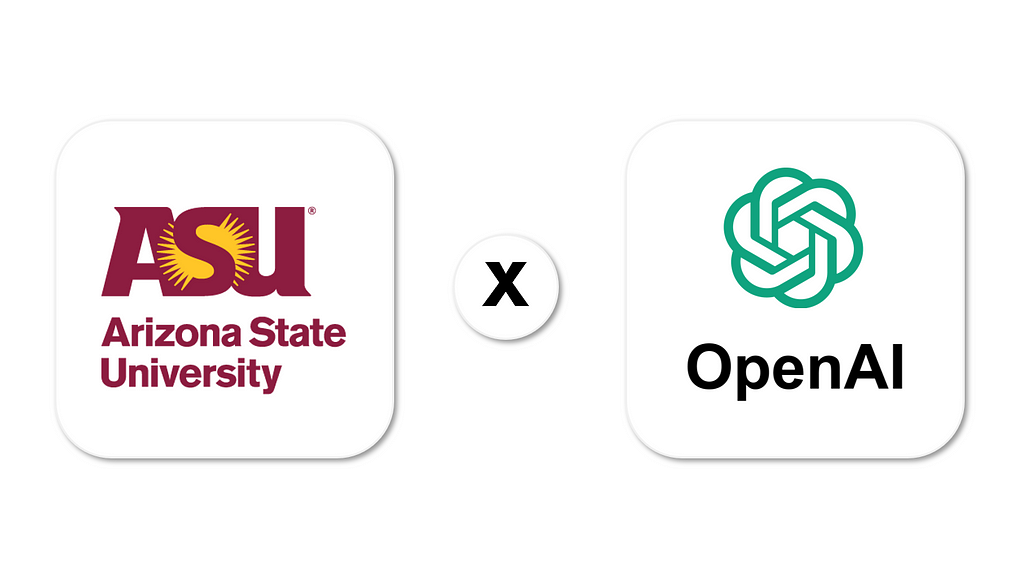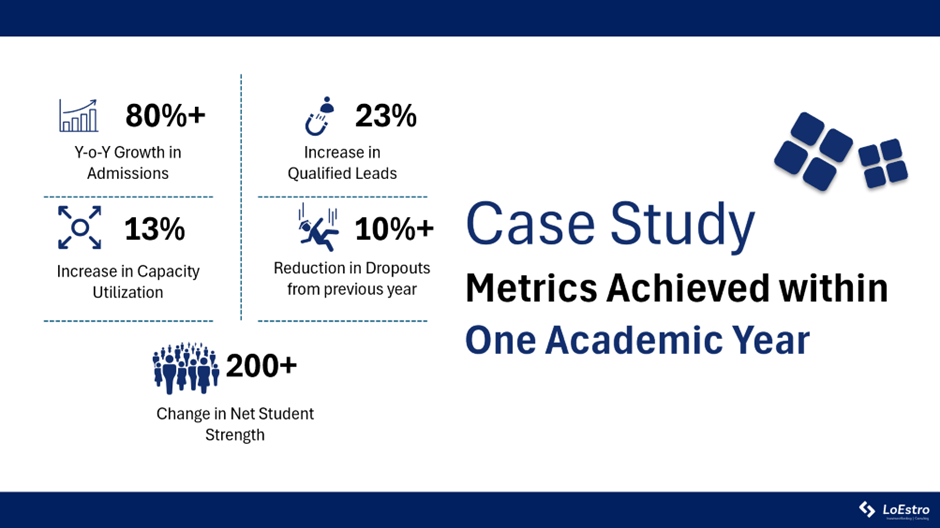
OpenAI collaborates with Arizona State University — Impact of AI in education
OpenAI collaborates with Arizona State University — Impact of AI in education
OpenAI announces first partnership with a Arizona State University. ASU’s recognition as the first higher education institution to integrate ChatGPT Enterprise into its programs emphasizes the profound influence of AI in reshaping higher education. ASU plans to build a personalized AI tutor for students, allow students to create AI avatars for study help and broaden the university’s prompt engineering course.
In May ’23, we published an article titled “Why generative AI is disrupting the edtech landscape?” where we foresaw the metamorphic impact of AI on education. Our keen foresight allowed us to predict the upcoming disruptions in the education sector. The article specifically highlighted OpenAI’s CHATGPT and its potential to revolutionize learning experiences in three significant ways. Fast forward to January ’24, recent news about Arizona State University (ASU) collaborating with OpenAI further validates our early insights.
Publication: Hindustan Times — 31 May 2023
Why generative AI is disrupting the edtech landscape?2022 was the year in which AI took the world by storm. Although artificial intelligence as a concept has existed since the 1950s, researchers have only recently begun to make real headway in the space. And after decades of trial and error, last year was when their work truly took on a life of its own.Generative AI first announced its advent through the visual medium. The AI image generator Dall-e 2, released by the AI research company Openai, allowed anyone to create striking images by typing a few words into a box; the only limit was their imagination. This tool was free to use, simple to understand, and capable of creating stunning imagery — naturally, it became a global sensation overnight, with users embracing its potential to unleash their creativity. A slew of rivals quickly, such as Stable Diffusion and Midjourney, quickly followed, even as a fierce debate broke out over the merits and threats posed by Ai-generated art.But this was just the opening phase of an even larger debate around the implications of AI. The focus swiftly shifted to its impact on the booming edtech industry with the November release of CHATGPT, Openai’s newest generative AI tool. Five days after going public, CHATGPT had crossed the one million users mark. By January of this year, it was estimated to have reached 100 million monthly active users, just two months after launching, making it the fastest-growing consumer app in history. Compare this to the nine months it took Tiktok to reach 100 million users, or the two and a half years for Instagram.Just as with the preceding wave of AI image generators, Chatgpt’s ability to generate responses to prompts captivated the public. This has been especially true in the education space, where teachers and students quickly recognized its potential to transform the learning experience. With tools like CHATGPT, they could reshape their engagement with educational solutions and foster a more interactive and personalised approach. However, this rapid evolution in the space has presented the edtech industry with a critical question — how can generative AI best be harnessed to drive the industry into the future?Generative AI’S potential in edtechTraditional learning systems have always struggled to be effective at scale. Every group of students will have a wide range of competencies and subject preferences. Some may excel in maths and the sciences, while others may be more inclined towards the arts. But while personal learning may provide the best results, no current learning system can devote that sort of attention to a single student. The integration of Ai-powered chatbots in edtech platforms addresses this issue. When provided with the appropriate inputs, they can create customised curriculums for every learner, provide real-time feedback, and build on their strengths while addressing gaps in their knowledge. This approach has been shown to result in significant improvements in test scores and overall academic performance, as best exemplified by Benjamin Bloom’s seminal paper on the 2 Sigma problem. Per his research, Bloom concluded that one-on-one tutoring, coupled with regular tests and feedback, resulted in students performing 2 standard deviations (sigma) above the average of the typical class. Conversational AI has finally equipped educators with the tools they need to put this theory into practice.Virtual TutorsThe integration of AI tools in classrooms can exponentially increase a single teacher’s effectiveness, through the aid of virtual tutors and teaching assistants. The incorporation of advanced AI routines and functions such as natural language processing (NLP) allows for individualised support to be given to each student. Companies such as Openai and Cognii are developing systems that allow students to fact-check and proofread their work, and receive real-time feedback on assignments and projects. From the tutor’s point of view, virtual assistants act as a bridge with their students, allowing them to focus on the larger discussion topics. They can also act in an administrative function, taking on time-consuming tasks such as tracking attendance, scheduling classes, and helping create assignments and revision packages.Solving doubts on demandGenerative AI grants students the ability to freely and instantaneously generate a response to their queries. Contrast this with typical classroom situation, where students have a limited time slot in which to have their doubts and confusions resolved. With its ability to generate human-like responses, chatbots can provide personalised and on-demand support to a student for his studies. When presented with a question, the system analyses it and draws from a vast databank of knowledge to immediately present a concise response. If the student is still unclear, they can continue the line of questioning until they get a clear and detailed explanation. A student taught to harness these capabilities is, therefore, at a massive advantage to his peers, empowered to seek out knowledge and study independently of a classroom’s confines.The emergence of generative AI marks a transformative era in edtech. It has already significantly changed teaching and learning methodologies, with a recent Impact Research study revealing that over 30 per cent of students and 50 per cent of teachers have embraced CHATGPT in the classroom. Notably, a majority in both groups highlighted the positive impact of this shift. But while the role of generative AI in edtech holds immense promise, the considerations it raises can’t be ignored. By ensuring generative AI is used to supplement existing methodologies, and establishing a shared set of guidelines and responsibilities, the ed-tech community can create a learning ecosystem that is safe, personalised, and inclusive towards all.GENERATIVE AI FIRST ANNOUNCED ITS ADVENT IN THE FORM OF THE AI IMAGE GENERATOR RELEASED BY OPENAIAuthor:Rakesh Gupta, the author is founder & managing partner, Loestro Advisors

